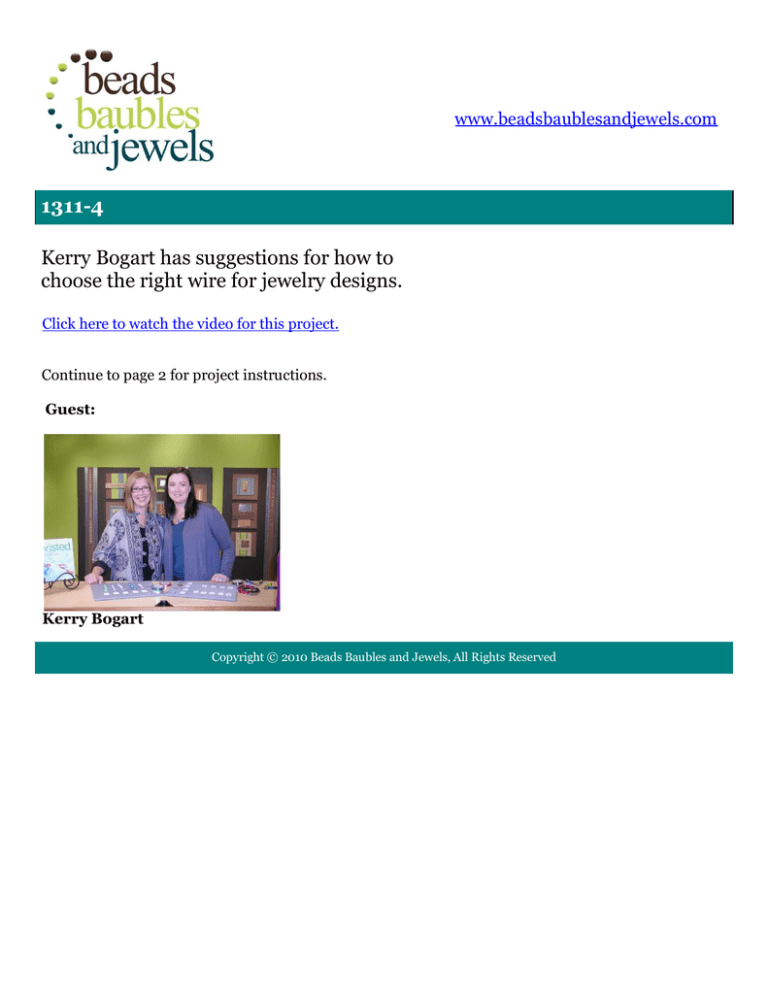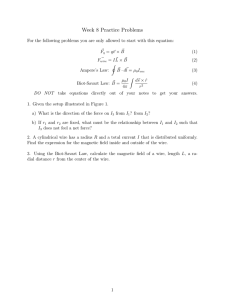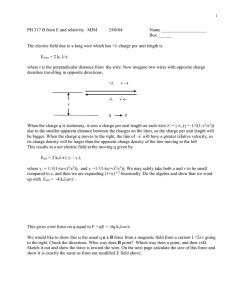
www.beadsbaublesandjewels.com
1311-4
Kerry Bogart has suggestions for how to
choose the right wire for jewelry designs.
Click here to watch the video for this project.
Continue to page 2 for project instructions.
Guest:
Kerry Bogart
Copyright © 2010 Beads Baubles and Jewels, All Rights Reserved
What Wire When:
A Guide To Choosing The Right Wire In Your Jewelry Designs
Artist - Kerry Bogert
When you are ready to take the steps to add wire to your jewelry designs, the first time you view the
wire category in a catalog can be confusing and overwhelming. Which wire works best in ear-wires?
Can one use that same wire for making wrapped loops or links in bracelets? The first time I ordered
wire, I knew I wanted sterling, but didn't get the sizing thing. So, I went with what was cheapest and
gave me the most footage per ounce, not understanding what I actually needed. The following is a
collection of tips to guide you through understanding what types of metals wire comes in, gauges,
hardness ratings, and which wire works best for which projects or components.
Types of Wire
There are so many types of wire available
on the jewelry market today. The classic
standbys of sterling silver and gold are still
the most common, but have you ever tried
brass, anodized copper, or even steel? Look
at your individual style of jewelry and see
which wire speaks to you. Is your work
bright and colorful? Then try experimenting
anodized metals. Do you tend to be more
rustic or vintage inspired? Oxidized brass or
copper can give your work that aged look.
Common Wires On The Market
◦ Anodized metals – also called colored copper, this wire created with a base metal (usually
copper) which is coated in a variety of different colors.
◦ Sterling Silver & Fine Silver – sterling is 92.5% silver and 7.5% other metals, fine silver is
99% pure silver.
◦ Gold-filled – created through a process of adding several layers of gold onto a base metal,
usually brass.
◦ Brass & Copper – though brass can be a bit stiffer than copper, both these wire are very
affordable and can be used in a variety of beading projects.
◦ Steel – the newest member of the jewelry wire family, this wire is becoming more and more
popular, just don't get it wet, it will rust.
Gauges & Hardness Ratings
The way in which the size of wire is measured is called gauge. The
larger the number, the finer the wire is, and vice versa, smaller
numbers mean thicker wire. Typically, jewelry makers use wire
between the ranges of 14g and 24g. There are always
exceptions to the rule, of course, but for these examples, we
will use what is most common. Along with gauge, wire is
given a hardness rating. Thankfully, these ratings aren't as
tricky as gauge. We'll tackle those first.
Hardness Ratings
•
•
•
Dead-soft – very bendable and pliable
Half-hard – stiffer than dead-soft but still
malleable
Full-hard – very stiff and can be difficult to bend
Special Note: I always buy dead-soft wire for my wire
working projects. It can be work hardened once a project is
complete so that it becomes rigid and holds its shape. Fullhard, on the other hand, needs to be annealed with a torch
so that it is malleable enough to work with.
Gauges
•
•
•
•
•
24g – this is fine wire and works best for lightweight dangles or intricate wire coiling over a
core wire.
20g – another mid-fine gauge of wire that is the
standard for ear wires. Works great for dangles as
well.
18g – this is a mid size wire that really is the most
versatile. It works well in clasps, links, bails, or
head pins. Does not work well with pearls or
other beads with tiny holes though.
16g – considered thick wire and used
primarily for clasps or links.
14g – a heavy gauge wire that provides
structure for bangle projects or designs that
need a solid core. Even when ordered as
dead-soft this wire can be very stiff because
of its thickness.
Special Note: When purchasing wire, the smaller the
gauge the more footage per ounce you will receive, but
don't let that keep you from ordering large gauge wire.
You need to order what is right for the job.
Visual Examples
The following images show the do's and don't's of using these different gauges when creating a
everything from a simple project like a bracelet with wrapped loops to coiling. Keep in mind that the
size of wire you choose needs to balance the size of your beads.
In this application, 14g is just way too big!
For simple linking, I like 16g for these
beads if creating simple loops rather than
wrapped ones, and I love 18g in this style
with wrapped loops. You'll see 20g works as
well, but you need a chunkier style of
wrapping for the loops or the beads can
move too freely on the wire. Clearly, 24g
just won't work for a project like this, it is
much too fine.
Here I created basic ear wires in a
ranges of gauges. Unless you have
had your lobes stretched, you will
have trouble getting 16g in your ear,
and even 18g can feel a little heavy or
tight. As I said before, 20g is the
standard for ear-wires If you try
making them from 24g, you'll find it
won't hold it's shape well.
When making clasps, again, heavier gauge
will be the wire of choice. Large 16g works
perfectly for many styles of S-clasps. When
using 18g, you may want to double the wire
up to give it added strength for use in clasps.
If your project is small and very light weight,
you could use 20g, but anything finer is just
too small for clasps.
Coils are an application where almost any wire gauge will do!! Avoid 14g or 16g, but all others made
lovely coils and the finer the gauge wire, the more intrique the wrapping of the coils will be.
Kerry Bogert ...
...is the author of Totally Twisted: Innovative Wire Work +
Art Glass Jewelry (Interweave 2010). You can find her tutorials
for wire jewelry projects in a variety of popular beading
magazines including Step By Step Wire, Easy Wire, and
Creative Jewelry. As well as Wire Style & Wire Style 2 by
Denise Peck (Interweave 2008, 2011), 101 Wire Earrings by
Denise Peck (Interweave 200) and Chain Style by Jane
Dickerson (Interweave 2009)
Visit www.kabsconcepts.com for view more of her work and
stop by www.kabsconcepts.blogspot.com for a peek into her life
as a Mom and artist.




